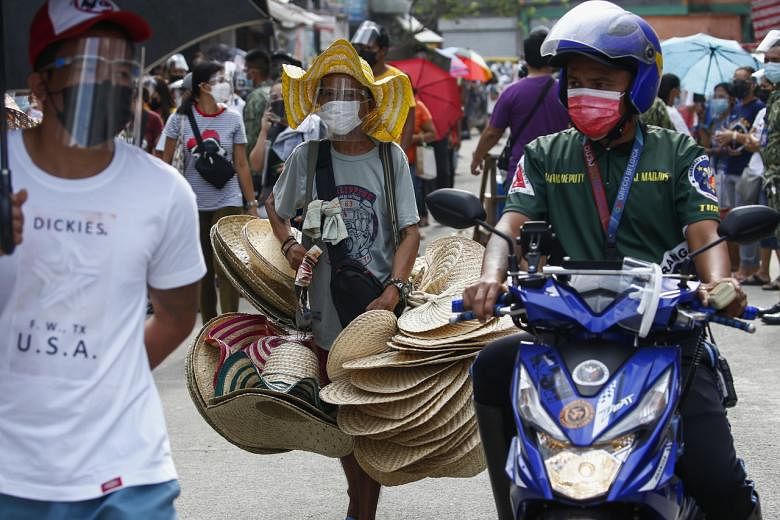MANILA (PHILIPPINE DAILY INQUIRER/ASIA NEWS NETWORK) - One of the advantages we had relative to many other comparable economies as we entered the pandemic crisis last year was a strong government financial position.
Our public debt-to-GDP ratio was relatively low at 40 per cent, compared to well over 100 per cent for other economies, including Singapore and the United States. We thus had ample leeway to borrow funds through the crisis without endangering our fiscal stability. We ended the year with government debt reported at P9.8 trillion (S$270.8 million) or 54.5 per cent of GDP, up from P7.7 trillion in 2019.
Government reportedly plans to borrow another P3 trillion this year, and a new economic stimulus package is under deliberation in Congress, inasmuch as prospects for sustained recovery remain clouded in uncertainty. It is thus well worth asking how the stimulus money would best be spent for maximum effect.
But what is this "maximum effect" we want? Clearly, it can't simply mean achieving maximum GDP growth when it is crucial that the benefits of economic stimulus are broadly felt, especially by those hardest hit by last year's lockdown-induced economic standstill. "Maximum effect" should also imply vast improvement in our management of the pandemic, which many now feel is getting out of hand with our public health system being overwhelmed, and God forbid, risking collapse.
Not even the best economic managers could assure the economy's resilience and the people's general well-being unless public health is also managed with competence enough to give our people the confidence to resume economic activity.
It has been well argued that economic stimulus must start with the demand side, by putting money in the pockets of people who have lost substantial incomes due to the paralyzing effect of the lockdowns. Businesses large or small see little sense in resuming normal production when people don't have money to spend on the goods and services they offer, or even if they do, can't feel confident enough to go out and patronize their shops or firms.
This is why stimulus money must also prominently go into the 3 Ts of pandemic management: testing, tracing, and treatment. Here, so much remains to be desired, especially in the first two. Lack of systematic mass testing and a unified system of contact tracing, long put to good use in neighboring countries that succeeded in taming the pandemic, continues to be the Waterloo of our pandemic management. Recent public admission that our tracing program has deteriorated by those tasked to lead it amounts to a sad admission of failure.
So how did we actually use our economic stimulus funds in the past year? The Department of Labor and Employment first rolled out assistance supposedly good for 600,000 workers in the first tranche, then for another 800,000 in the second tranche. The Department of Finance followed with a wage subsidy program for 3 million workers.
But with a labor force of about 42 million workers, all this was a mere pittance. The Social Amelioration Program ("ayuda") from the Department of Social Welfare and Development reportedly reached some 18 million families, so was more comprehensive in coverage-although it far from replaced actual incomes lost by most recipient families. But unless purchasing power is restored near pre-pandemic levels, firms find little urge to borrow money to resume business operations at usual levels.
Worse, their cost of doing business has risen with the additional expenses required to deal with Covid-19, from rubbing alcohol to Covid-19 tests for employees, not to mention traditional hurdles that tax and regulatory authorities throw in their way.
Lastly, stimulus money must be aimed to circulate within the domestic economy to achieve maximum multiplier effect. Unfortunately, vaccines are entirely imported, so the vast sums spent to acquire them will have no such multiplier effect. Other than that, we would all do well to consciously buy local whenever we can-and by that I mean not only opting for Philippine-made products, but also goods and services coming from our own local communities. That way, we can also help small businesses around us sustain their workers' jobs, and keep our local economies humming.
- The writer is a columnist with the paper. The Philippine Daily Inquirer is a member of The Straits Times media partner Asia News Network, an alliance of 23 news media organisations.

